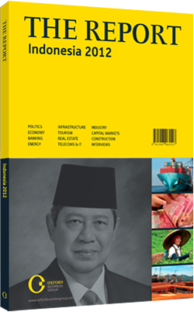The bigger picture: Cinema and television are both expected to see increased demand
The market in both pay-TV and cinema remains highly concentrated, but developments in 2011 and the prospects of strong growth point to a greater level of competition in years to come. Indonesian pay-TV is currently expanding at the slowest rate of all in Asia, with household penetration at a mere 3% in 2010 – roughly 1.3m households across the country.
However, operators are bullish, expecting the ratio to rise to 7% by 2015. Media Partners Asia, a pay-TV industry association, expects that the potential subscriber base could grow to 16m based on income and affordability. “The Indonesian pay-TV market remains small compared with other Asian markets,” Eric Thohir, the president director of TVO ne, a branch of Visi Media Asia, told OBG. “But the number of pay-TV subscribers is set to grow rapidly over the next five years.”
FRESH DEMAND: PricewaterhouseCoopers’ “Media and Entertainment Outlook 2008-12” notes that growth in Indonesia’s pay-TV market is the slowest of all Asian countries, averaging only around 2% annually, far lower than in smaller markets like Vietnam, Malaysia and Pakistan. Some analysts nonetheless argue that the five years from 2010 will bring 18% annual growth, on the back of an improving economy and increased market competition. “It’s a tough market for service providers because many Indonesians are unwilling to pay for programming when so many free channels are available,” said Arya Mahendra, the corporate secretary for MNC SkyVision, the holding group for the market’s leading brand, Global Mediacom’s Indovision.
TAILOR-MADE TV: Operators have been expanding their offering to increase their appeal to lower-income segments of the TV market. MNC SkyVision has long dominated the pay-TV segment with its Indovision brand, but the group launched the TopTV channel in April 2008 to target the lower segment of the market. GSM operator Telkomsel similarly broke into the market in 2007 with the launch of its TelkomVision brand. This offers TV packages such as Hit Family, costing only $6.5 per month. The group is already one of the top three pay-TV groups. Indovision and TelkomVision both use a direct-to-home network while, the third operator, First Media, uses a cable network. These providers accounted for 95% of paying subscribers in 2010.
TelkomVision launched the first internet protocol television service in June 2011, called Groovia TV, capitalising on Telkomsel’s triple-play package of telephone, internet and television. Even as service options grow, an ongoing challenge for operators remains the large pool of illegal service providers, which cover a combined subscriber base larger than the legal brands. While the Ministry of Communications and Information Technology has only licensed 700 operators, the Indonesian Cable TV Association estimates a much higher figure of 2500 providers. This would put the total number of subscribers at 2.5m households instead of the official figure of 1.3m. However, with the number of illegal operations growing, industry players are lobbying the government to crack down on a practice that costs them around Rp1.2trn ($144m) in lost revenue each year.
TAX ISSUES: While liberalisation is creating more competition on the small screen, the cinema business is still dominated by a single operator, which captures over 80% of the market. Group 21, Indonesia’s largest cinema operator with 500 of the country’s 600 screens, controls the three biggest film importers. Moreover, box-office sales for foreign and local film productions have grown rapidly, doubling in five years. However, at $150m, Indonesia’s box-office revenues are still comparatively small by regional standards. A showdown was ongoing in 2011 between Global Mediacom and the state’s tax department, which has started enforcing a neglected clause for the taxation of royalties of imported films in addition to that on celluloid reels. The state is claiming Rp31bn ($3.7m) in back taxes since 2009. Despite the modest sum, cinemas have halted film imports, with the showdown having no immediate end in sight.
While demand is growing substantially in both markets, convergence is spurring more market pressures in pay-TV as GSM operators vie for market share.
You have reached the limit of premium articles you can view for free.
Choose from the options below to purchase print or digital editions of our Reports. You can also purchase a website subscription giving you unlimited access to all of our Reports online for 12 months.
If you have already purchased this Report or have a website subscription, please login to continue.

